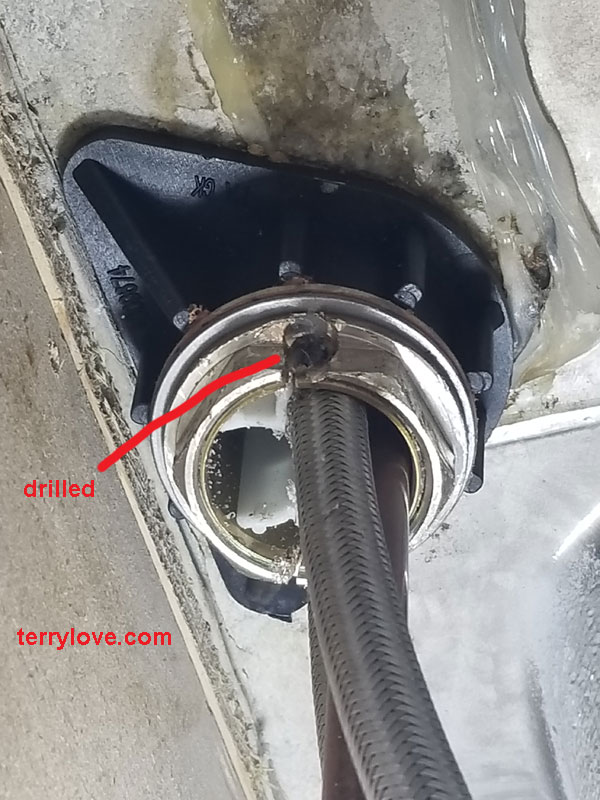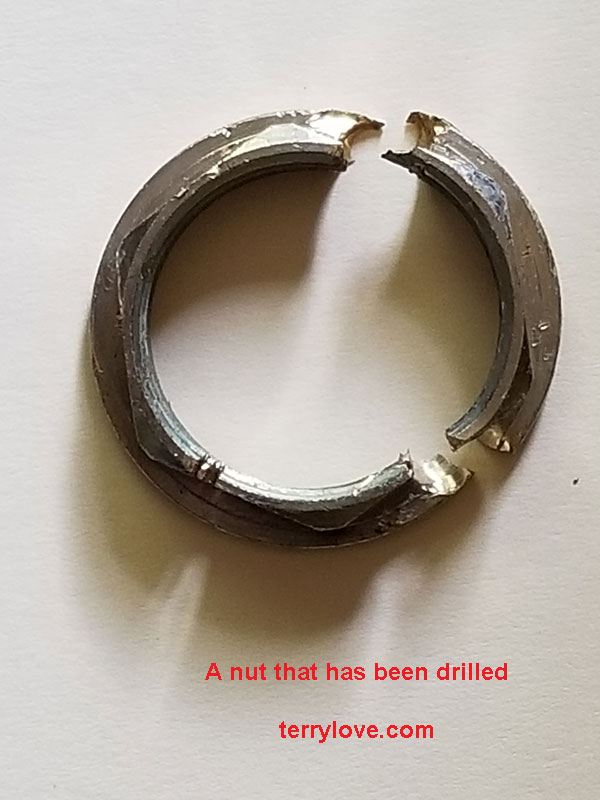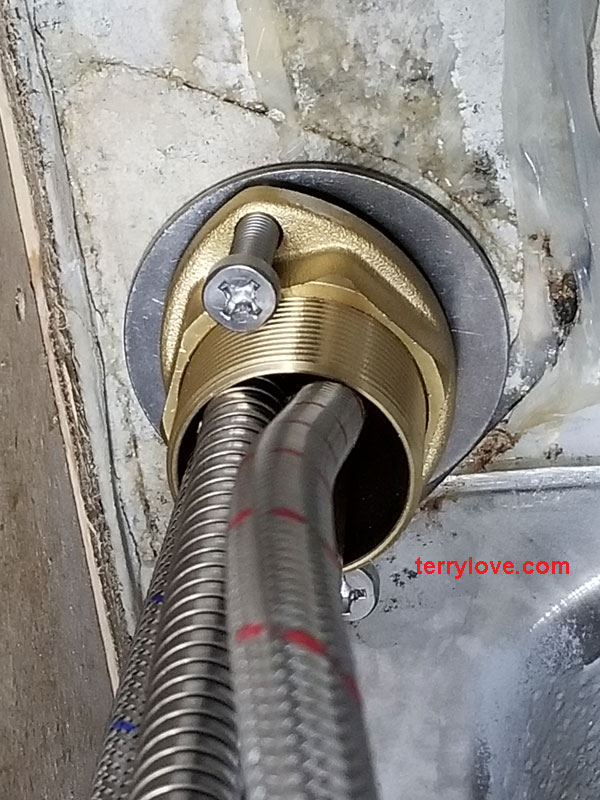I'm having an impossible time removing a 16-year-old Moen M7800 kitchen faucet. It's to be completely replaced, so it doesn't matter if it gets damaged in the process.
Here's the main problem: rather than there being three lines (hot, cold, spray) that run through the central hole in the sink, there is a one central copper threaded line, with copper pipe extensions for all three connections soldered to the base of that.
So there is only one rather large fixture attaching it to the underside of the sink, with a single metal washer and nut. The nut is about 1 3/8 - 1.5 inches diameter, and due to it's size, a basin wrench won't go around it. Due to it's age, it's corroded. It's in behind the center of a double sink, and hard to get a good grip with enough force with anything large enough to go around the nut.
My local big box hardware store suggested spraying it with PB Blaster and giving it a go, even whacking it with a hammer to loosen it. I've done all that, but with no luck so far.
Oh, the garbage disposal is out, so there is a bit more room to move around under there. It's being replaced too, so it's gone so I could get at the faucet.
If I could just get this nut off, I could be on with the rest of the project! Has anyone else run into this? Thank you for any advice and suggestions.
Here's the main problem: rather than there being three lines (hot, cold, spray) that run through the central hole in the sink, there is a one central copper threaded line, with copper pipe extensions for all three connections soldered to the base of that.
So there is only one rather large fixture attaching it to the underside of the sink, with a single metal washer and nut. The nut is about 1 3/8 - 1.5 inches diameter, and due to it's size, a basin wrench won't go around it. Due to it's age, it's corroded. It's in behind the center of a double sink, and hard to get a good grip with enough force with anything large enough to go around the nut.
My local big box hardware store suggested spraying it with PB Blaster and giving it a go, even whacking it with a hammer to loosen it. I've done all that, but with no luck so far.
Oh, the garbage disposal is out, so there is a bit more room to move around under there. It's being replaced too, so it's gone so I could get at the faucet.
If I could just get this nut off, I could be on with the rest of the project! Has anyone else run into this? Thank you for any advice and suggestions.
Attachments
Last edited by a moderator:




